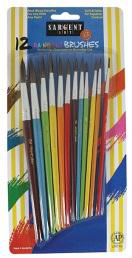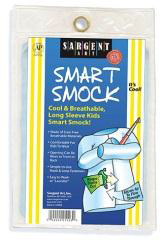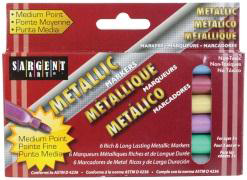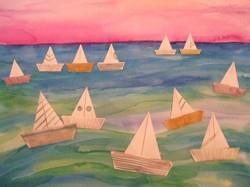RESOURCES:Winslow Homer (1836-1910) is probably the best known American water color artist. He is famous for his seascape paintings off the coasts of Maine, Bermuda, and Cuba. During the Civil War he was a magazine illustrator and drew many war pictures. But his passion for the sea led him to creating beautiful seascapes. Did you know that Homer loved to go fishing when he was a child?
Goal (Terminal Objective):
Students will create watercolors seascape paintings based on knowledge of the artist, Winslow Homer, and the Japanese art of origami.
Objective:
Students will combine a variety of watercolor techniques to paint a seascape. They will learn the art of Japanese paper folding to make sailboats in a variety of sizes. The sailboats will be collaged on the seascape using perspective to give the illusion of depth.
National Standards:
Visual Arts Grades K-4 Content Standard 1: Understanding and applying media, techniques, and processes
Visual Arts Grades K-4 Content Standard 3: Choosing and evaluating a range of subject matter, symbols, and ideas
Visual Arts Grades K-4 Content Standard 4: Understanding the visual art in relation to history and culture
Visual Arts Grades K-4 Content Standard 5: Reflecting upon and assessing the characteristics and merits of their work and the work of others
Visual Arts Grades K-4 Content Standard 6: Making connections between visual arts and other disciplines (geography and mathematics cross curriculum connections)
Purpose:
Students will learn about the life of the American artist, Winslow Homer. They will look at his watercolor seascapes and notice how he mixed colors of paint directly on the canvas. They will learn the techniques of hard/soft edge and wet-in-wet watercolor applications. The ancient art of Japanese paper folding will be incorporated to make sailboats. Placing the sailboats into the seascape composition according to size will teach perspective.
New Vocabulary:
Winslow Homer, seascape, watercolors, origami, perspective, horizon, sailboat, Civil War, Maine, Bermuda, Cuba, Japan
Materials:

#56-6012 Natural Hair Rainbow Brush Assortment

#22-5103 Children’s Smart Smock (light blue color)

#22-1506 Metallic Med Point Peggable Carton Markers

#22-1403 8g Washable Glue Sticks

#22-6210 Washable Watercolor Magic 4 oz. 10 pcs

#22-7244 1444 ct. Graphite Pencils

#98-8916 Paint Storage Tray , 6 jar tray
Masking tape, ruler, small square pieces of origami or copy paper
Time:
3 lessons (45 minutes each)
Introduction and Motivation (Set):
- Teacher introduces students to the American artist, Winslow Homer. Students view several of his seascapes and notice how the artist mixed colors on the paper. What colors do you see in the water? What is the weather like? How did the artist
show movement in the water? Does the sea look dangerous? How is a seascape different from a landscape? - Do you know that Winslow Homer drew many pictures of the Civil War? Do you know that he loved to go fishing when he was a child? Do you know that he lived in Maine, Bermuda, and Cuba? Can you find these places on the map?
- Teacher introduces new vocabulary.
- Teacher asks students to think about sailing on the sea? Do you think fishermen sailing on the sea encountered any dangers?
Instruction:
Lesson 1:
Teacher prepares watercolor paper by drawing a border. This area will not be painted and will prevent the paper from curling when wet. It will be trimmed when painting is complete. Students look at several seascapes by Winslow Homer. Students look for the horizon line in each painting. How does the artist show perspective? Teacher demonstrates taping watercolor paper to the table and painting the sky using the wet-in- wet technique. Students follow this procedure and paint the skies for their seascapes.Allow paintings to dry.


Lesson 2:
Teacher demonstrates hard and soft edge watercolor painting. A variety of colors can be
used to paint the sea. Teacher demonstrates a variety of brush strokes that will give the effect of movement in the sea. Students paint the sea portions of their seascapes. Allow to dry.


Lesson 3:
Teacher introduces the ancient art of Japanese origami (paper folding) to students. How is origami related to mathematics? Teacher demonstrates folding a sailboat. Students fold several sailboats in a variety of sizes. Teacher explains perspective to students. The sailboats are pasted into the seascape by size to create the illusion of depth. The smallest sailboats are placed nearest the horizon. Students decorate their sailboats with liquid metal markers.

Origami sailboat directions designed by teacher:
- Fold a square paper in half diagonally.
- Fold the two top sides to the center fold.
- Fold up the lower triangle.
- Fold up the lower part of the triangle (apply paste to hold the sailboat together).

Activities:
(1) Guided Practice:
- Students learn about Winslow Homer and his seascape paintings. Students watch teacher’s step-by-step demonstrations and discuss teacher exemplars.
- Students use Sargent Art watercolors to paint the skies and seas in their seascapes.
- Students observe teacher’s demonstration of origami sailboat folding.
- Students fold sailboats and place them in their seascapes.
(2) Independent Practice and Check for Understanding:
- Teacher circulates through the room during student work time, answering questions and offering support as needed.
- Teacher notes students’ understanding of directions and reviews with the class if necessary
(3) Closure:
- In small groups, students show their paintings to classmates and ask each other questions about the project.
- Students discuss the importance of respect for individuality
Evaluation:
Level One — The artwork conveys excellent knowledge of watercolor painting and perspective. A horizon line is visible. Sailboats are carefully folded in various sizes and placed to show depth in the composition. The finished painting is original and the sailboats are decorated. The sea expresses movement. Colors work well together. The student understands wet-in-wet and hard/soft edge watercolor techniques. Craftsmanship is excellent.
Level Two – The artwork conveys good knowledge of watercolor painting and perspective. A horizon line is visible. Sailboats are folded in various sizes and placed to show depth in the composition. The finished painting is original and some of the sailboats are decorated. The sea expresses movement. Colors work well together. The student understands wet-in-wet and hard/soft watercolor techniques. Craftsmanship is good.
Level Three — The student has made an effort to paint the sea and sky with wet-in-wet and hard/soft edge watercolor techniques. The horizon line is not clear. Sailboats are folded in various sizes and randomly placed with no concern for perspective. Colors do not work well together. The finished painting is original but the sailboats are not decorated. The sea expresses some movement. Craftsmanship is fair.
Level Four — The artwork does not convey knowledge of wet-in-wet and hard/soft water color techniques. The horizon line is not clear. Sailboats have not been completed. The seascape lacks originality. The sea expresses no movement. Craftsmanship is poor. The student requires support in handing materials.
Extension:
Students can learn to make a variety of origami forms using the website
http://dev.origami.com/diagram.cfm
Teacher will select simple folding origami forms and print them out for students. Students are challenged to connect math and art skills in this extension. Cooperative small group learning is encouraged.
Resources:
http://www.vangoghgallery.com/artistbios/Winslow_Homer.html
http://www.winslow-homer.org/Biography/biography.html
http://en.wikipedia.org/wiki/Winslow_Homer
http://www.loftcam.com/homer.html
gulf stream
http://www.artchive.com/artchive/H/homer/gulf_stream.jpg.html
http://en.wikipedia.org/wiki/The_Gulf_Stream
fog warninig
http://www.artisticdecor.com/Nauticals/876.htm
herring net
http://www.artic.edu/artaccess/AA_American/pages/Amer_8.shtml
breezing up
http://www.allposters.com/-sp/Breezing-Up-1876-Posters_i125516_.htm
origami
http://en.wikipedia.org/wiki/Origami
http://dev.origami.com/diagram.cfm
water color techniques
http://www.rickmundy.com/Techniques.htm



